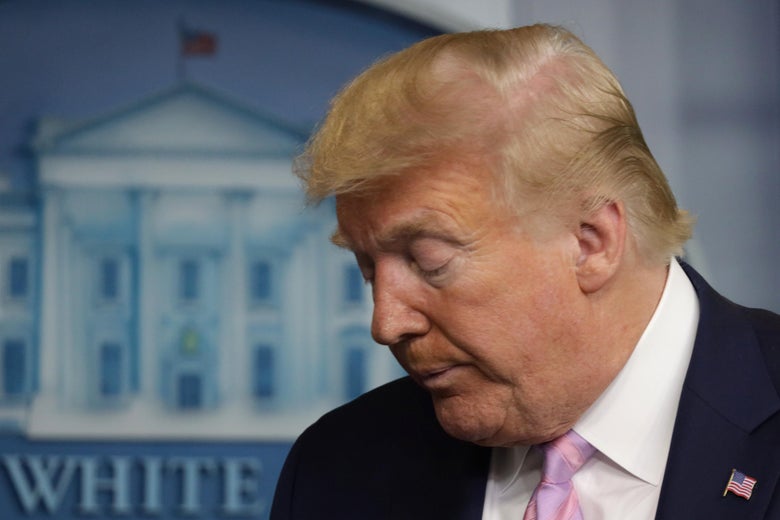
President Donald Trump participates in the daily briefing of the White House Coronavirus Task Force in the James Brady Briefing Room April 10, 2020 at the White House in Washington, D.C.
Alex Wong/Getty Images
The New York Times takes a deep dive into the weeks that preceded the coronavirus crisis and paints a devastating portrait of how the White House wasted valuable weeks before it finally decided to take action. The wasted weeks are hardly a surprise as several outlets, including the Washington Post, have taken looks at how President Donald Trump ignored several efforts by his officials to take action that could have saved lives. But the Times story published Saturday manages to shed new light into the disfunction that existed in the first months of the year and puts on full display just how many warnings Trump and his allies ignored for weeks. It also makes clear how many in the administration knew full well the extent of the crisis that was on the country’s doorstep yet could not get the right people to pay attention.
A key reason why Trump was slow to heed warnings was his distrust of what he saw as the “Deep State.” Coming shortly after his impeachment battle, Trump had deep skepticism of the people who were warning him of the crisis that was a few short weeks away. Little exemplifies that more than the way his health and human services secretary, Alex Azar, tried to get Trump to focus on the coronavirus twice in January, first on Jan. 18 and then on Jan. 30, when he warned it could become a pandemic. Trump dismissed the warning, characterizing Azar as an alarmist.
Even though initiatives that could have helped detect and stop the spread of the coronavirus had been thought of, it seems a lack of leadership prevented anything from actually moving forward. Azar, for example, had said the government would set up a system to measure the spread of the virus in five American cities but it was delayed for weeks and that left the administration in the dark on how quickly the virus was spreading.
The Times story makes evident there was a clear disconnect between what Trump was saying and what officials were learning. While the president painted a rosy picture and predicted that “when it gets a little warmer” the virus would “miraculously” go away, officials in his administration were concluding they would have to take an aggressive move toward social distancing. An email in late February is particularly exemplary as it shows how officials learned the key detail that asymptomatic people could still spread the virus. But they still couldn’t get the president to focus as turf wars within a White House known for its internal chaos kept derailing any hope for quick action.
Trump was apparently none too happy with the bombshell story as he sent out two tweets on Saturday that explicitly criticized the New York Times.
Readers like you make our work possible. Help us continue to provide the reporting, commentary and criticism you won’t find anywhere else.
Join Slate Plusfrom Slate Magazine https://ift.tt/2wu0CIq
via IFTTT
沒有留言:
張貼留言